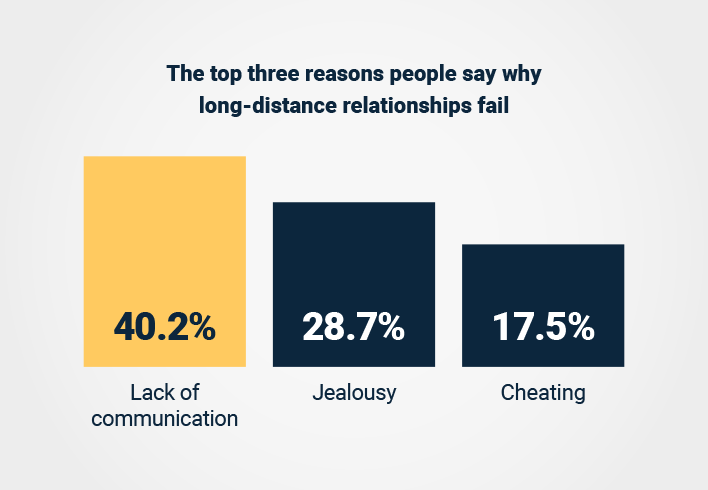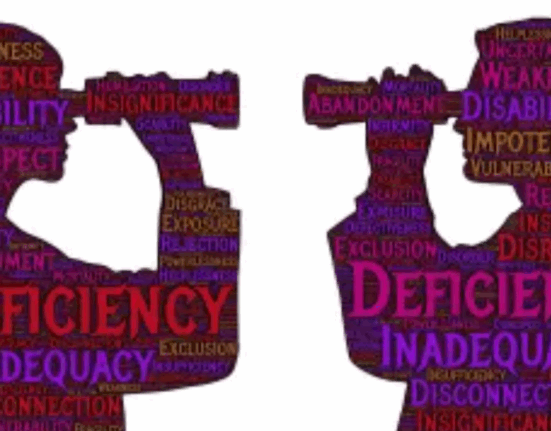Last Updated on August 15, 2024 by Rachel Hall
- Expert Insights: How Long-Distance Relationships Can Thrive – Proven Tips for Long-Distance Couples
- The Rise of Long-Distance Relationships in the Digital Age
- Key Challenges for Couples in Long-Distance Relationships
- Research-Backed Benefits of Maintaining Emotional Intimacy in Long-Distance Relationships
- Strategies for Couples to Maintain Intimacy and Communication in Long-Distance Relationships
- Real-Life Success Stories of Couples from Award-Winning Studies
- The Role of Technology in Modern Long-Distance Relationships
- Expert Tips on How Couples Can Maintain Communication and Emotional Intimacy in Long-Distance Relationships
- The Future of Long-Distance Relationships: Trends, Studies, and Scheduling Tips
- Conclusion: How This Article Helps Couples Maintain Emotional Intimacy in Long-Distance Relationships
Expert Insights: How Long-Distance Relationships Can Thrive – Proven Tips for Long-Distance Couples
Long-distance relationships are often seen as a test of love, patience, and commitment. Many people are hesitant to enter a long-distance relationship due to the challenges involved, such as being apart from their partner, navigating different time zones, and maintaining emotional intimacy. However, new research suggests that with the right strategies, long-distance couples can not only survive but thrive. In this article, I will delve into the study-backed benefits, challenges, and strategies to help you and your partner create a lasting and fulfilling relationship despite the distance.
The Rise of Long-Distance Relationships in the Digital Age
In the past, long-distance long-term relationships were seen as an anomaly, often occurring later in an established relationship due to work, education, or military service. However, in today’s digital age, the landscape of long distance dating has changed dramatically. With the widespread availability of technology, couples can now communicate more easily and frequently, making it possible to maintain a strong connection even when miles apart.
According to a recent survey by a state university, the number of long distance couples has increased by 40% in the last decade. This surge can be attributed to the rise of online dating platforms, social networks, and communication tools like Facetime and texting. These technologies have made it easier for people to meet, fall in love, and commit to a long-distance romantic relationship. Interestingly, a study from the UK found that 60 percent of all couples currently in a relationship have experienced some form of long distance.
Understanding the Emotional Challenges
While technology has made it easier to stay connected, it has also introduced new challenges. Communication is key in any relationship, but it becomes even more crucial in a long-distance dating. Misunderstandings can arise more easily when you can’t see your partner’s body language or hear the tone of their voice. This is particularly true for people in different time zones, where finding time to connect can become a practical challenge factor.
Moreover, the absence of physical closeness can lead to feelings of anxiety, insecurity, and miss your partner. The lack of daily interaction can make it harder to share your day-to-day experiences, which are often vital for building a deeper emotional bond. To overcome these challenges, it’s essential for long-distance partners to prioritise open and honest communication and to make an effort to maintain emotional intimacy.

Key Challenges for Couples in Long-Distance Relationships
Maintaining a long-distance relationship comes with a unique set of challenges. While every relationship has its difficulties, couples in long-distance relationships face obstacles that are often intensified by the physical distance. Here are some of the most common challenges and tips on how to overcome them:
Communication Barriers and How to Overcome Them
Effective communication is the foundation of any healthy relationship, but it becomes even more critical in a long-distance relationship. Without the ability to interact face-to-face regularly, long-distance couples may struggle to convey their thoughts and emotions. This can lead to misunderstandings, especially when relying on digital communication methods like texting and emails, where tone and body language are lost.
To overcome these barriers, it’s important to establish a regular schedule for communication. This could mean setting aside time each day for a video call Facetime session or even texting throughout the day to stay connected. Couples should also strive to communicate openly about their needs and feelings, ensuring that both partners feel heard and understood. Using a variety of communication methods can also help keep things fresh and engaging.
Financial Strains and Practical Solutions
Another significant challenge in long-distance relationships is the financial strain that comes with frequent travel. Regular visits are crucial for maintaining the emotional bond, but they can also be costly. Plane tickets, accommodation, and other travel expenses can add up quickly, especially if the distance between partners is substantial.
To manage these costs, couples should plan their visits carefully, taking advantage of deals and discounts whenever possible. Long-distance partners can also consider meeting halfway to reduce travel expenses or alternating who travels each time. Additionally, using virtual experiences, like watching movies together online or having virtual dinner dates, can help maintain the connection without the financial burden of constant travel.

Research-Backed Benefits of Maintaining Emotional Intimacy in Long-Distance Relationships
Despite the challenges, research shows that long-distance relationships can have unique benefits that geographically close relationships might not offer. A study conducted by Cornell University found that partners in long-distance relationships often develop stronger emotional connections due to the increased effort required to maintain the relationship.
The Positive Impact of Time Apart
Time spent apart can strengthen a relationship. According to relationship experts, being away from your partner can lead to more meaningful and focused interactions when you are together. This is because couples in long-distance relationships tend to value the time they spend together more, leading to deeper emotional intimacy. The phrase “absence makes the heart grow fonder” rings true here, as couples often find that the time apart helps them appreciate their partner more.
Moreover, this time apart allows for personal growth, as each partner can focus on their individual goals and passions. When they come back together, they bring new experiences and perspectives to the relationship, which can enrich the connection and make it stronger.
Strategies for Couples to Maintain Intimacy and Communication in Long-Distance Relationships
Maintaining intimacy and communication in a long-distance relationship requires intentional effort and creativity. Here are some strategies that can help couples stay connected and committed:
- Regularly schedule face-to-face visits: Even though long-distance partners may not see each other as often as they would like, making the effort to visit in person is crucial. Planning regular visits helps keep the relationship grounded and provides something to look forward to.
- Use technology to your advantage: Take full advantage of modern technology to stay connected. Social media platforms, messaging apps, and video calls can help bridge the gap. Consider using apps designed for partners, such as those that allow you to share your day-to-day experiences or send spontaneous messages.
- Maintain a shared schedule: Syncing your schedules can help ensure that you have time to connect each day. Whether it’s a morning check-in or a nightly video call, having a consistent routine can help maintain the relationship’s rhythm.
Real-Life Success Stories of Couples from Award-Winning Studies
There are many examples of partners who have successfully navigated the challenges of a long-distance relationship. Award-winning studies and expert testimonials highlight how long-distance couples can overcome the odds by prioritising their relationship, maintaining open lines of communication, and making the most of their time together.
For instance, one study found that couples who regularly communicate about their needs and expectations are more likely to stay together and report higher levels of satisfaction and commitment. Another example is a couple who used their time apart to grow individually, which in turn strengthened their relationship when they were together.
The Role of Technology in Modern Long-Distance Relationships
In today’s world, technology plays an indispensable role in maintaining long-distance relationships. From social media to video calling platforms, there are countless tools available to help couples stay connected, even when they are miles apart.
Tools and Apps to Stay Connected
There are several tools and apps specifically designed for long-distance partners. For example, apps like Marco Polo allow users to leave video messages that can be viewed at the other person’s convenience. This is particularly helpful for partners in different time zones who may not always be available to talk at the same time.
Other useful apps include those that allow partners to sync their calendars, share photos, or even watch movies together online. These tools help long-distance partners create shared experiences, which are vital for maintaining emotional intimacy.
Expert Tips on How Couples Can Maintain Communication and Emotional Intimacy in Long-Distance Relationships
According to relationship experts, the key to a successful long-distance relationship lies in consistent effort and open communication. Here are some tips from the experts:
- Prioritise communication: Set aside time each day to talk, even if it’s just for a few minutes. This helps maintain the connection and ensures that both partners feel valued.
- Be transparent about feelings: Sharing your thoughts and emotions is crucial in a long-distance relationship. Don’t be afraid to express how you’re feeling, whether it’s about the relationship or your day-to-day experiences.
- Keep the romance alive: Send thoughtful messages, plan surprise virtual dates, and remind your partner how much they mean to you. Small gestures can go a long way in maintaining emotional intimacy.
The Future of Long-Distance Relationships: Trends, Studies, and Scheduling Tips
As we move into the future, long distance relationships are likely to become even more common. With the increasing mobility of people and the continuous advancement of technology, the way we manage relationships is evolving. New studies are emerging, offering insights into how couples can better navigate the challenges of being apart.
One key trend is the growing use of virtual reality to create shared experiences that mimic real-life interactions. Another important aspect is the development of more sophisticated scheduling tools that help couples align their busy lives. As these technologies continue to advance, they will play an even more significant role in helping couples stay connected, no matter the distance.
Conclusion: How This Article Helps Couples Maintain Emotional Intimacy in Long-Distance Relationships
In conclusion, while long distance relationships are undoubtedly challenging, they can be incredibly rewarding with the right approach. By leveraging technology, prioritising communication, and maintaining emotional intimacy, couples can not only survive but thrive despite the distance. This article has provided insights from new research, expert tips, and real-life success stories to guide couples on their journey. Remember, with commitment, effort, and love, your long distance relationship can stand the test of time

Rachel Hall, M.A., completed her education in English at the University of Pennsylvania and received her master’s degree in family therapy from Northern Washington University. She has been actively involved in the treatment of anxiety disorders, depression, OCD, and coping with life changes and traumatic events for both families and individual clients for over a decade. Her areas of expertise include narrative therapy, cognitive behavioral therapy, and therapy for traumatic cases. In addition, Rachel conducts workshops focusing on the psychology of positive thinking and coping skills for both parents and teens. She has also authored numerous articles on the topics of mental health, stress, family dynamics and parenting.














Leave feedback about this